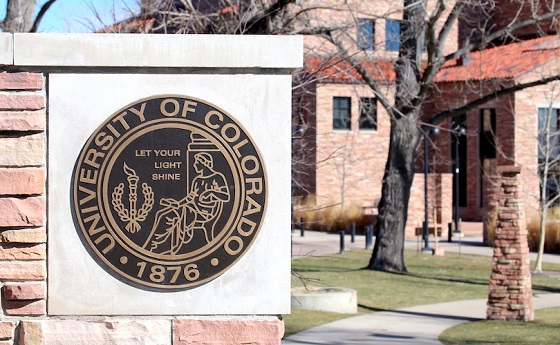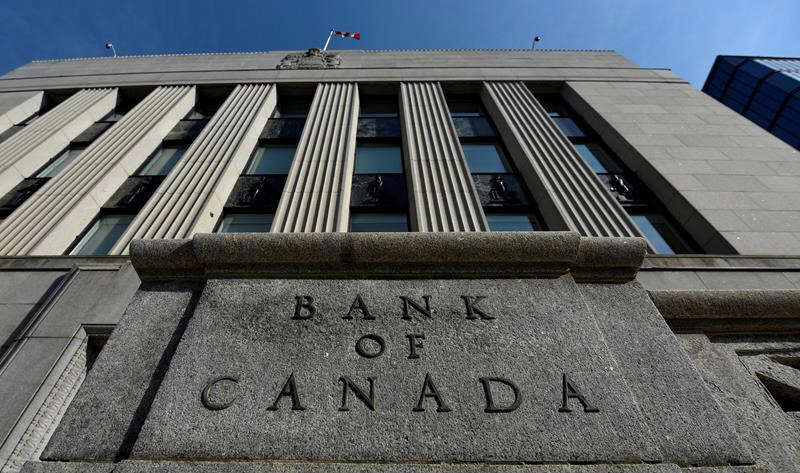Alberta
Province has three scenarios for return to school in September. Final decision by August 1. Details

From the Province of Alberta
Getting ready for 2020-21 school year
A comprehensive re-entry plan for the upcoming school year allows schools and parents to prepare for learning while putting student and staff safety first.
The plan offers guidance on a wide range of operational issues including hygiene and health requirements, student learning, transportation and diploma exams. It also addresses mental health and psychological supports for students and staff.
School authorities will plan for all three scenarios for September:
- In-school classes resume (near normal operations with health measures)
- In-school classes partially resume with additional health measures
- At home learning continues (in-school classes are cancelled)
The preferred and likely scenario is that students will return to daily in-school classes at the beginning of the year. The government will share its final decision by Aug. 1 on which scenario will be in place at the beginning of the school year. However, school authorities are asked to prepare for implementing any of the three possibilities during the upcoming school year, including on short notice.
“We are providing clear direction and the certainty parents and the school system need to plan ahead and get ready for what the new school year may look like. We are hoping, and it is likely, students can return to daily classes at school while taking health precautions, but we have to prepare for all possibilities. I want to thank our education leaders, teachers and parents for their thoughtful contributions to this comprehensive plan.”
“This plan puts the interests of students and staff first. Educators, administrators, families, health professionals and government all need to work together to support a safe return to in-person classes. We continue to monitor the situation closely. The reality is, we must weigh the risk of prolonged school closures against the risk of COVID-19 outbreaks in closed settings, such as schools. A safe and successful school year will only be possible if we all work together.”
The re-entry plan balances the need for provincial standardized approaches in some areas while also providing flexibility and recognition of school authorities’ autonomy to address health guidelines in the most effective ways in their own communities.
Alberta Education worked closely with many education partners on the plan, including the Alberta School Boards Association, the Alberta Teachers’ Association, the College of Alberta School Superintendents, the Association of Independent Schools and Colleges in Alberta, The Association of Alberta Public Charter Schools, individual school authorities and the Alberta School Councils’ Association which compiled input from more than 66,000 parents.
“The Alberta School Councils’ Association is pleased that considerations for the safety of students and staff remain priorities throughout this detailed plan, along with the recognition that school authorities are best suited to making operational decisions directly impacting their local school communities. We look forward to ongoing work and communications with the ministry, as this is key for successful implementation and return to school.”
“Alberta’s teachers are looking forward to supporting our students as we transition into the 2020-21 school year. As our recent survey indicates, teachers are concerned about the health and safety of themselves, their colleagues and their students. We expect to work with government to strengthen and improve the plans for re-entry to ensure that schools can provide healthy and safe environments for teachers and students.”
“Supporting the health and safety of students and staff continues to be a top priority for the ASBA and all school boards. We appreciate government providing clarity, while ensuring flexibility and autonomy, as each of Alberta’s public, Catholic and Francophone boards face challenges within the context of their local communities. As the situation evolves, we will continue to collaborate with government and our members to adjust the plan in preparation for the upcoming school year.”
“The College of Alberta School Superintendents joins the province in its commitment to protecting the health and well-being of all students and staff as we transition to the 2020-21 school year. We appreciate the collaborative manner in which the re-entry plan has developed and are pleased that school divisions have been provided with the flexibility and authority to implement procedures beyond the plan that they deem necessary to ensure the safety of their learning environments.”
“We are deeply appreciative of the ongoing consultation with all educational partners by the Minister of Education and the ministry as a whole in these trying circumstances. Teachers and systems have responded to the pandemic with remarkable energy and ingenuity. The proactive, engaging leadership of our government continues to be essential for education to fulfil its vital role in Alberta through this critical time.”
“Our association appreciates the government’s collaborative approach in developing this re-entry plan. We remain committed to supporting our schools so that their staff and students can experience a safe and positive learning environment in the coming academic year.”
Public health guidance for schools
Return to in-school class learning may vary across the province and is dependent on the number of COVID-19 cases in the local area. School boards should develop their own COVID-19 plans under the applicable scenario and health guidelines prior to reopening.
Measures to reduce the risk – scenario 1 (in-school classes resume – near normal operations with health measures)
Cleaning
- Enhanced cleaning and disinfecting, including daily cleaning for all areas of the school, washrooms and high-touch surfaces cleaned several times a day or more as needed.
- Regularly scheduled deep cleaning when students are not present.
Student/staff hygiene and illness
- Routine screening for all staff and students.
- Strict stay-at-home policy for any students or staff exhibiting symptoms of COVID-19.
- Hand hygiene expectations when entering and exiting the school and classrooms, before and after eating.
- Continual reminders of the importance of respiratory etiquette (e.g., cover coughs and sneezes, avoid touching the face and disposal of used tissues promptly, followed by hand hygiene).
- Students who develop symptoms at school may be asked to wear a mask and isolate in a separate room until a parent arrives for pickup. If a separate room is not available, the student must be kept at least two metres away from other individuals.
Physical distancing and grouping
- When possible, practise some physical distancing as a good precaution to prevent the spread of disease.
- In classrooms, buses and during activities when physical distancing may not be possible, extra emphasis is put on other hygiene practices.
- Reorganization of rooms to allow for more physical space.
- Cohorting of students by class where possible.
- Guiding foot traffic flow through entrances and hallways by using markers on the floor or pylons/barriers.
- Avoiding large gatherings such as assemblies.
Masks
- Staff and students will not be mandated to wear masks.
- Masks may be considered in circumstances where there is prolonged close contact (greater than 15 minutes) and distance of two metres cannot be maintained.
- Masking is generally not recommended for younger students.
Shared items
- A no-sharing policy – all students should have their own supplies.
- Where sharing of equipment is required, the equipment should be cleaned between uses.
Cases of COVID-19 in a school
- The zone medical officer of health will work with school authorities on the rapid identification of cases through easily accessible testing, rapid close contact identification, and isolation measures when needed.
- The zone medical officer of health will also work with school authorities to provide follow-up recommendations and messaging for staff, parents and students.
- Alberta Health Services may request the school to close in-person classes to allow the public health investigation to take place.
- Each school authority will support students and staff to learn or work at home if they are required to self-isolate.
Measures to reduce the risk – scenario 2 (in-school classes partially resume with additional health measures)
The same considerations as scenario 1, with the following differences:
- A recommended maximum of 15 people in a classroom to allow for more consistent physical distancing.
- Students will attend school less regularly as school authorities will need to adjust their class schedule and configuration to meet the physical distancing requirement.
Non-COVID-19 operational highlights
- Any summer programming will follow scenario 2 of the re-entry plan and the associated public health measures.
- August diploma exams will proceed for students taking diploma courses this summer.
- For the 2020-21 school year, diploma exams will be held if the first or second scenarios are in place. In scenario 3, exams may be cancelled.
- Provincial achievement tests (PATs) for Grades 6 and 9 can be held in the first and second scenarios, but will be optional for school authorities to participate.
- If scenario 3 is in place at the beginning of the school year, the January PATs will be cancelled. May/June PATs may be cancelled based on the duration of at-home learning.
- School authorities can, as deemed appropriate at the local level, reduce time spent teaching non-core subjects to allow for additional instruction time on core subjects.
- School authorities must enable the full participation and inclusion of students with disabilities under each scenario and address any learning gaps from the 2019-20 school year.
- Mental health supports should be in place for students and staff.
This plan is part Alberta’s Relaunch Strategy to safely begin removing public health restrictions and reopen our economy. For more information, visit alberta.ca/RelaunchStrategy.
Alberta
Premier Smith: Canadians support agreement between Alberta and Ottawa and the major economic opportunities it could unlock for the benefit of all

From Energy Now
By Premier Danielle Smith
Get the Latest Canadian Focused Energy News Delivered to You! It’s FREE: Quick Sign-Up Here
If Canada wants to lead global energy security efforts, build out sovereign AI infrastructure, increase funding to social programs and national defence and expand trade to new markets, we must unleash the full potential of our vast natural resources and embrace our role as a global energy superpower.
The Alberta-Ottawa Energy agreement is the first step in accomplishing all of these critical objectives.
Recent polling shows that a majority of Canadians are supportive of this agreement and the major economic opportunities it could unlock for the benefit of all Canadians.
As a nation we must embrace two important realities: First, global demand for oil is increasing and second, Canada needs to generate more revenue to address its fiscal challenges.
Nations around the world — including Korea, Japan, India, Taiwan and China in Asia as well as various European nations — continue to ask for Canadian energy. We are perfectly positioned to meet those needs and lead global energy security efforts.
Our heavy oil is not only abundant, it’s responsibly developed, geopolitically stable and backed by decades of proven supply.
If we want to pay down our debt, increase funding to social programs and meet our NATO defence spending commitments, then we need to generate more revenue. And the best way to do so is to leverage our vast natural resources.
At today’s prices, Alberta’s proven oil and gas reserves represent trillions in value.
It’s not just a number; it’s a generational opportunity for Alberta and Canada to secure prosperity and invest in the future of our communities. But to unlock the full potential of this resource, we need the infrastructure to match our ambition.
There is one nation-building project that stands above all others in its ability to deliver economic benefits to Canada — a new bitumen pipeline to Asian markets.
The energy agreement signed on Nov. 27 includes a clear path to the construction of a one-million-plus barrel-per-day bitumen pipeline, with Indigenous co-ownership, that can ensure our province and country are no longer dependent on just one customer to buy our most valuable resource.
Indigenous co-ownership also provide millions in revenue to communities along the route of the project to the northwest coast, contributing toward long-lasting prosperity for their people.
The agreement also recognizes that we can increase oil and gas production while reducing our emissions.
The removal of the oil and gas emissions cap will allow our energy producers to grow and thrive again and the suspension of the federal net-zero power regulations in Alberta will open to doors to major AI data-centre investment.
It also means that Alberta will be a world leader in the development and implementation of emissions-reduction infrastructure — particularly in carbon capture utilization and storage.
The agreement will see Alberta work together with our federal partners and the Pathways companies to commence and complete the world’s largest carbon capture, utilization and storage infrastructure project.
This would make Alberta heavy oil the lowest intensity barrel on the market and displace millions of barrels of heavier-emitting fuels around the globe.
We’re sending a clear message to investors across the world: Alberta and Canada are leaders, not just in oil and gas, but in the innovation and technologies that are cutting per barrel emissions even as we ramp up production.
Where we are going — and where we intend to go with more frequency — is east, west, north and south, across oceans and around the globe. We have the energy other countries need, and will continue to need, for decades to come.
However, this agreement is just the first step in this journey. There is much hard work ahead of us. Trust must be built and earned in this partnership as we move through the next steps of this process.
But it’s very encouraging that Prime Minister Mark Carney has made it clear he is willing to work with Alberta’s government to accomplish our shared goal of making Canada an energy superpower.
That is something we have not seen from a Canadian prime minister in more than a decade.
Together, in good faith, Alberta and Ottawa have taken the first step towards making Canada a global energy superpower for benefit of all Canadians.
Danielle Smith is the Premier of Alberta
Alberta
A Memorandum of Understanding that no Canadian can understand

From the Fraser Institute
The federal and Alberta governments recently released their much-anticipated Memorandum of Understanding (MOU) outlining what it will take to build a pipeline from Alberta, through British Columbia, to tidewater to get more of our oil to markets beyond the United States.
This was great news, according to most in the media: “Ottawa-Alberta deal clears hurdles for West Coast pipeline,” was the top headline on the Globe and Mail’s website, “Carney inks new energy deal with Alberta, paving way to new pipeline” according to the National Post.
And the reaction from the political class? Well, former federal environment minister Steven Guilbeault resigned from Prime Minister Carney’s cabinet, perhaps positively indicating that this agreement might actually produce a new pipeline. Jason Kenney, a former Alberta premier and Harper government cabinet minister, congratulated Prime Minister Carney and Premier Smith on an “historic agreement.” Even Alberta NDP Leader Naheed Nenshi called the MOU “a positive step for our energy future.”
Finally, as Prime Minister Carney promised, Canada might build critical infrastructure “at a speed and scale not seen in generations.”
Given this seemingly great news, I eagerly read the six-page Memorandum of Understanding. Then I read it again and again. Each time, my enthusiasm and understanding diminished rapidly. By the fourth reading, the only objective conclusion I could reach was not that a pipeline would finally be built, but rather that only governments could write an MOU that no Canadian could understand.
The MOU is utterly incoherent. Go ahead, read it for yourself online. It’s only six pages. Here are a few examples.
The agreement states that, “Canada and Alberta agree that the approval, commencement and continued construction of the bitumen pipeline is a prerequisite to the Pathways project.” Then on the next line, “Canada and Alberta agree that the Pathways Project is also a prerequisite to the approval, commencement and continued construction of the bitumen pipeline.”
Two things, of course, cannot logically be prerequisites for each other.
But worry not, under the MOU, Alberta and Ottawa will appoint an “Implementation Committee” to deliver “outcomes” (this is from a federal government that just created the “Major Project Office” to get major projects approved and constructed) including “Determining the means by which Alberta can submit its pipeline application to the Major Projects Office on or before July 1, 2026.”
What does “Determining the means” even mean?
What’s worse is that under the MOU, the application for this pipeline project must be “ready to submit to the Major Projects Office on or before July 1, 2026.” Then it could be another two years (or until 2028) before Ottawa approves the pipeline project. But the MOU states the Pathways Project is to be built in stages, starting in 2027. And that takes us back to the circular reasoning of the prerequisites noted above.
Other conditions needed to move forward include:
The private sector must construct and finance the pipeline. Serious question: which private-sector firm would take this risk? And does the Alberta government plan to indemnify the company against these risks?
Indigenous Peoples must co-own the pipeline project.
Alberta must collaborate with B.C. to ensure British Columbians get a cut or “share substantial economic and financial benefits of the proposed pipeline” in MOU speak.
None of this, of course, addresses the major issue in our country—that is, investors lack clarity on timelines and certainty about project approvals. The Carney government established the Major Project Office to fast-track project approvals and provide greater certainty. Of the 11 project “winners” the federal government has already picked, most either already had approvals or are already at an advanced stage in the process. And one of the most important nation-building projects—a pipeline to get our oil to tidewater—hasn’t even been referred to the Major Project Office.
What message does all this send to the investment community? Have we made it easier to get projects approved? No. Have we made things clearer? No. Business investment in Canada has fallen off a cliff and is down 25 per cent per worker since 2014. We’ve seen a massive outflow of capital from the country, more than $388 billion since 2014.
To change this, Canada needs clear rules and certain timelines for project approvals. Not an opaque Memorandum of Understanding.
-

 MAiD2 days ago
MAiD2 days agoFrom Exception to Routine. Why Canada’s State-Assisted Suicide Regime Demands a Human-Rights Review
-

 Business2 days ago
Business2 days agoCarney government should privatize airports—then open airline industry to competition
-

 Business2 days ago
Business2 days agoWhat’s Going On With Global Affairs Canada and Their $392 Million Spending Trip to Brazil?
-

 Bruce Dowbiggin13 hours ago
Bruce Dowbiggin13 hours agoIntegration Or Indignation: Whose Strategy Worked Best Against Trump?
-

 Energy2 days ago
Energy2 days agoCanada following Europe’s stumble by ignoring energy reality
-

 COVID-1914 hours ago
COVID-1914 hours agoUniversity of Colorado will pay $10 million to staff, students for trying to force them to take COVID shots
-

 Business2 days ago
Business2 days agoWhy Does Canada “Lead” the World in Funding Racist Indoctrination?
-

 Banks2 days ago
Banks2 days agoTo increase competition in Canadian banking, mandate and mindset of bank regulators must change






